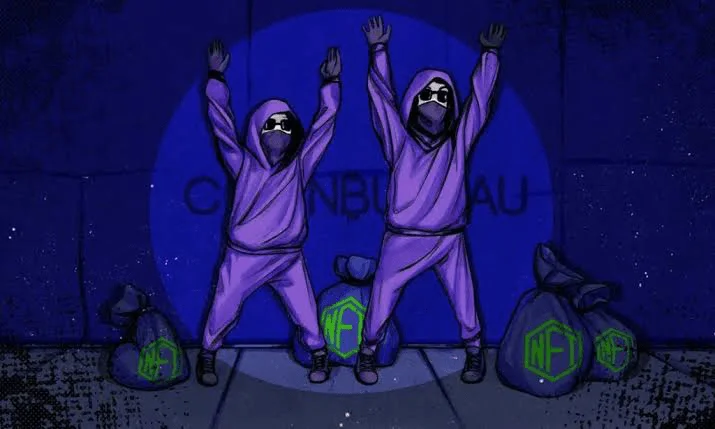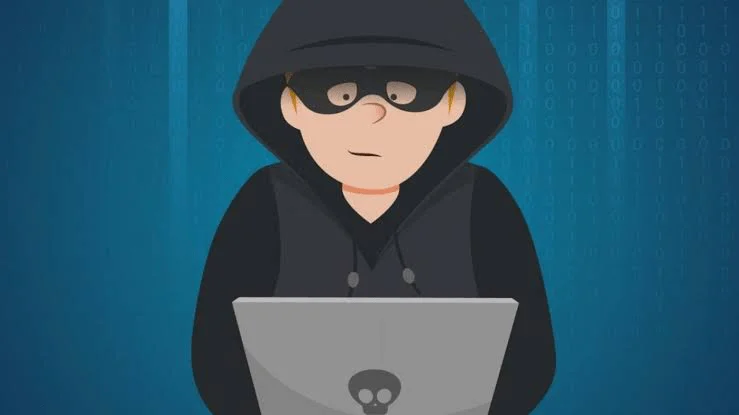Can NFTs be hacked or stolen? Yes is the quick answer. Just as crypto assets are mined from digital wallets and exchanges, your assets can be hacked in an NFT.

According to our earlier introductory guide to NFTs, NFT stands for “non-fungible token,” and it may technically include anything digital, such as artwork, animated GIFs, tunes, or video game goods.
An NFT can be a one-of-a-kind thing, such as a real-life painting, or a multiple-copy item, such as trading cards, but the blockchain keeps track of who owns the file.
Using blockchain technology, NFTs allow you to buy and sell ownership of unique digital goods and keep track of who owns them.
Many NFTs have unexpectedly become valuable assets; digital artist Beeple sold one NFT for $69 million at Christie’s, and Grimes sold a series of ten digital artworks for roughly $6 million.
It’s not surprising, then, that NFT platforms have become targets for hackers wanting to steal digital artworks or steal credit card information to acquire more.
It is not a hack of the underlying blockchain or the servers housing the crypto assets that causes such breaches, as it is with the compromise or theft of crypto assets.
To acquire access to the private keys for crypto assets, a hacker would have to compromise a large number of systems.
Hackers instead go after the digital services, platforms, and networks that asset owners use to buy, exchange, and store compromised crypto assets.
What Causes NFT Scams?
Scams have existed for ages in the history of human culture. Using computer networks and the internet provided us with numerous advantages.
Every advancement in technology provided a new avenue for bad actors to exploit it.
But that doesn’t mean people can’t continue to develop new technology.
Rather, we will continue to address flaws and prevent malicious actors from abusing the system.
It’s a never-ending cycle of conflict and peace. Nonetheless, so many people have been effective in enhancing our well-being through time.
NFT Scams: What they are and how they work
NFT scams can be identified and classified in a variety of ways. Smart contracts and blockchain technologies for NFTs have only been in use for a few years.
The security infrastructure, as well as the audit procedures, are both brand new. It is enough to spend hours and money on the problem if the cause is full decentralization. Similarly, as the internet grew in popularity, so did the number of scams.
NFT phishing scam

Phishing was one of the very first internet scams. It indicates how early in a technology’s life cycle people are experimenting with it.
They have a sense of surprise and interest in them. Scammers make use of this new technology.
They send out seemingly harmless emails or build malicious URLs that steal personal information. When consumers click on them out of curiosity, this happens.
Always remember not to reveal your bitcoin wallet’s 12 or 24 seed phrase. You will never be asked to share it with a project.
In fact, it is common knowledge that one’s secret recovery phrase should never be shared with others. It’s a good idea to write it down and keep the receipt.
Many people advise against storing the 12 or 24 secret phrases on their computers.
This is because hackers can steal your key and use it to lock you out of your money.
Similarly, no NFT project will ever ask for your NFT wallet address. Unless it’s on a forum other than their verified and controlled website.
When you receive an email or a link from anywhere other than the NFT project asking for your NFT wallet address. Always consider your actions before clicking or disclosing personal information.
Without your knowledge, your NFTs could be stolen from your NFT wallet. Phishing attempts are a common way for your NFTs to be stolen.
We recognize them as con artists scouring the internet for unsuspecting victims. Because the NFT market is still very new, many users have had their NFTs stolen.
NFT Pump and Dump Scam
Pump and dump methods are similar to typical NFT scams in that they do not involve your NFTs being stolen.
Early supporters of an NFT initiative do so because of the excitement surrounding it.
This is despite the fact that a number of holders who failed to sell in time have been left with a pile of worthless NFTs.
By this point, the founding crew has deactivated all social media profiles.
Because it is so easy to create online communities in today’s world, this scenario has occurred many times.
In fact, the most common use cases involve forming worldwide communities of civilians.
Doing your own research on the project is the greatest method to avoid having your NFTs stolen. Interact with certain members of the community.
You may discover numerous programmed accounts with the same conversation pattern on occasion.
Such evidence supports the theory that bots are controlling chat behaviour.
This is to make it appear credible in comparison to the human counterparts who double up from time to time.
By providing ambiguous responses that all revolve around the cost of the token or artwork.
NFT Catfishing Scam

Catfishing is the practice of impersonating someone in order to obtain personal information from you.
Scammers acting as founders of an NFT initiative, for example, target someone in the community. Consider receiving a request to provide your wallet’s address.
Because it comes through the project’s channel, it appears to be genuine. However, you will never hear from a member of the founding crew. This is now accepted wisdom in the NFT community.
NFT Smart Contract Vulnerability Scams

Many projects take precautions to safeguard the safety of their artworks. A secondary market for trade and ownership provenance is enabled by marketplaces and protocols.
We must ensure that their smart contracts are not vulnerable to exploitation. Both the service provider and the artist lose money when NFTs are drained out of the process and sold on the secondary market.
How to prevent your NFTs from being hacked, stolen, or copied
The following methods can be used to secure your NFTs (Non-Fungible Tokens) from theft or fraudulent duplicates.
- Choose a non-custodial wallet instead
- Keeping Things Cold (Cold Storage)
- Use caution while dealing with potential purchasers
- Use only reputable NFT marketplaces
Let’s take a closer look at each one:
Consider using a non-custodial wallet.
Non-custodial wallets provide a safe place to keep your NFTs. A 12- to 24-word seed phrase, as well as a mix of touch identification and bespoke passwords, protect them.
It is recommended that you stack your NFTs on the Non-custodial crypto wallet rather than storing them in the wallets of the marketplaces you frequent.
If you are not cautious, even non-custodial wallets can be hacked using a variety of ways including malware, keylogging, and phishing scams.
To keep your non-custodian wallet safe,
- Create a unique password for this account that you will not use for any other account or wallet.
- Never give it out to anyone or save it in a password manager.
- Don’t click on any links that you aren’t sure about.
- Take advantage of a premium VPN with greater encryption.
Cold Storage
Cold Storage is nothing more than an offline and external derivative that cannot be connected to the internet or accessed by hackers.
It protects your digital assets, such as NFTs, from hackers and criminals. The sole disadvantage of Cold Storage is that you must connect to Cold Storage’s authority every time you want to make a transaction, which takes a long time.
Use caution when dealing with potential buyers
Many people contact you via the internet with attractive offers. To examine the person, you must have a clear viewpoint and a sense of the market scenario.
A tempting offer you get could be the work of a con artist. Because a transaction on the blockchain can never be traced or reversed, do not share your wallet access with anybody.
Use only reputable NFT marketplaces
Many marketplaces have sprung up as the crypto and NFT industries grow. Many of them are inept at providing consumers with security and protection against theft or fraud.
To conduct transactions with your crypto wallet and NFTs, you must only use reputable NFT marketplaces. Examine the level of security provided by a marketplace before signing up.
These are the steps you may take to protect your NFT from copycats and scams.
NFT marketplaces like Nifty Gateway do not have control over an NFT once it has been stolen due to the blockchain-based nature of NFTs.
As a result, it appears unlikely that users who have had their collections taken will be able to recover them.
Larger Bitcoin and cryptocurrency wallets and exchanges attract a lot more traffic than smaller NFT marketplaces.
When those platforms are hacked, they normally move rapidly to restore assets, or they may have insurance in place to reimburse victims of theft or breach.
We encourage our readers to use the platform’s 2FA (two-factor authentication) and never use the same password on multiple platforms.
While two-factor authentication adds a layer of security, crypto-asset owners should make their devices, apps, and networks as secure as possible.
Updating the firmware on a WiFi router, employing unique passwords, and adding firewalls can all help to keep a user’s surroundings safe from illegal access.
NFT assets can also be kept in “cold” wallets, similar to Bitcoin and other cryptocurrencies, where the private keys are printed on paper and kept in a physically secure area.
FAQs on NFT theft, security and duplication
What’s the best way to make an NFT?
To make an NFT, start by choosing a blockchain network. Today, Ethereum has the most NFTs, but other blockchains that enable NFTs to include Finance Smart Chain, Flow by Dapper Labs, Tron, Polkadot, Tezos, Cosmos, and WAX, to name a few.
Which exchanges and crypto wallets can work with your NFT is determined by the blockchain network you choose.
You’ll need a crypto wallet that supports the ERC-721 standard, such as MetaMask, Trust Wallet, Coinbase Wallet, or Rainbow if you want to use Ethereum for your NFT. In addition, you’ll require some Ether funds (ETH). A transaction processing or “gas” fee will be charged on all Ethereum transactions.
OpenSea, Rarible, and Mintable are among the platforms that allow you to construct NFTs.
Connect your crypto wallet to these NFT sites, then click the “Create” button to upload your digital art or other NFT files. Once your NFT is signed with your wallet, you may add contract conditions and data, and your NFT is ready to be listed.
What is the procedure for purchasing an NFT?
There are a plethora of places to purchase NFTs, and more are popping up every day. The most widely used platforms are:
- OpenSea
- Inventive Gateway
- Rarible
- SuperRare
- Foundation
How do you keep NFTs safe?
NFTs can be stored in wallets as well as Cold Storage derivatives on Marketplaces.
In general, it is not a good idea to keep your wallets connected to markets because they are easily compromised.
Is it possible for someone to take your NFT?
Yes, absolutely. Every day, on the internet, there are several NFTs scams. You must use caution while interacting with some types of people. Your NFTs must be kept in Cold Storage or non-custodian wallets.
